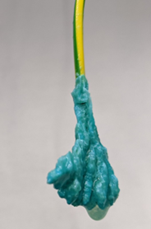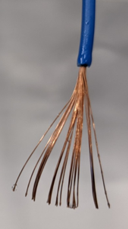Copper Wire Test: How it Works (and Why Do It)
As the automotive sector continues to evolve, one challenge is that ASTM standardization of testing of coolants for new-energy vehicles hasn’t happened just yet. (Update: Since the publication of this article, ASTM published new test standards for electric vehicle coolants.)
In short, developments in the marketplace have outpaced developments in testing standardization.
But when standardized testing regimens haven’t been defined, research and development operations must innovate and be creative.
Dober’s copper wire test is an empirical test designed to test for the development of precipitate on copper wire after electric vehicle (EV) coolant has been subjected to specific test conditions.
The next generation of vehicles requires new testing regimens to assess coolants’ safety and efficacy.
As we have discussed in previous articles, coolants for new-energy vehicles require a far lower range of electrical conductivity, as those vehicles are at greater risk of electrical fires. Lower conductivity in the coolant means electrical fires are less likely to happen.
However, the new-energy vehicle market is just that: new. The challenge therein is that ASTM testing standards for those vehicles don’t exist in any uniform way as they do for the legacy internal combustion engine (ICE) market.
The copper wire test is one tool in Dober’s toolkit when it comes to testing coolants for new-energy vehicle systems.
If you want to learn more about Dober's testing expertise and know-how in the coolant space or you're are interested in a technology partnership, reach out to us and we'd be happy to chat.
Copper Wire Testing Protocol
How does the test work?
In summary, copper wire is dipped into a coolant solution; if a deposit develops on the wire, that means the coolant has failed the test. Why? The development of a precipitate on the wire means the potential disruption of electric current. You can see an example of such a deposit in the image to the right.
In a world where testing standards for the next generation of vehicles haven't been defined just yet, the copper wire test is one quick way to test and compare coolants.
The copper wire test, which typically takes about 20 minutes, is conducted as such:
- Remove the rubber cover of the copper wire (spreading the wires out like a fan)
- Dip the wires in coolant solution to be tested
- Apply 15 V and 10 A for 20 minutes
- Check for formation of deposit on wire
If the coolant is highly conductive, then the current will flow through the wires, turning them blue. If the coolant is extremely conductive, however, a deposit will form on the wires, which is not what you want to see.
If the coolant is not particularly conductive, then you will see the wires appear unchanged (see image to the right). Furthermore, the coolant solution itself should also be free of precipitate. 
Unlike, say, the ASTM D1384 test, which features hard limits for corrosion weight loss, the copper wire test is a visual test without an established rating scale (for now, at least – that could change, especially given the rate of change in this industry).
As we noted previously, electric vehicle coolants should have a far lower range of electrical conductivity. Internal combustion engines typically have electrical conductivity ranging from 3,000-5,000 microsiemens per centimeter (µs/cm). (As we noted in the previously linked article, electrical conductivity wasn’t so much of an issue for ICE engines.)
Electrical vehicles, meanwhile, check in at a range of just 3-100 µs/cm.
Simply put, the numbers are different – so the testing strategies will have to be, too.
Testing Takeaways
Overall, the copper wire test is a simple, visual and quick way to compare coolants. While electric and fuel-cell vehicles on the road today are using legacy coolants, they are not as effective as coolants formulated specifically for those vehicles.
With the backing of tests like the copper wire test, Dober offers an EV SLC coolant formulated specifically for electric vehicles.
If you’re interested in learning more about Dober’s performance fluids, drop us a line. We’re always excited to talk about the science of our products and processes, and what sets us apart in the nascent marketplace for new-energy vehicle coolants.



.png?width=352&name=PFD%20-%20Product%20Page%20-EV%20SLC%20(2).png)
